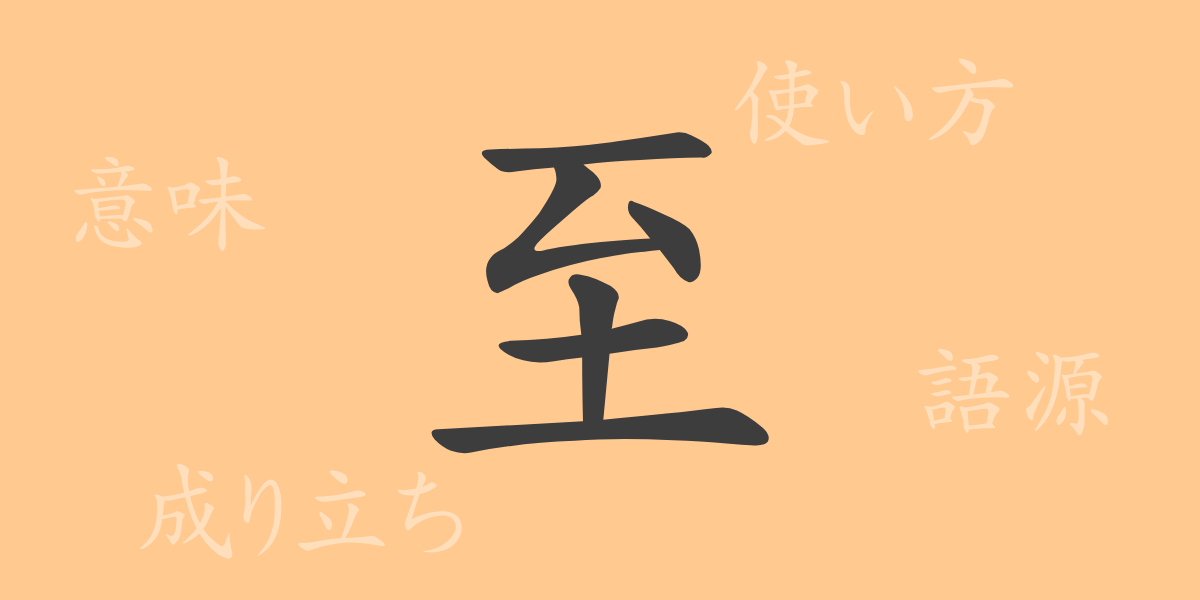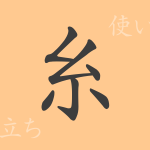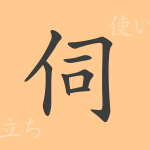The beauty of the Japanese language is reflected in its delicate characters. The 常用漢字 (jouyou kanji), with their rich shapes and meanings, convey the depth of the language. The kanji “至 (いたる)” is frequently used in our daily lives, but few may know its origins, meanings, and usages. This article delves into the kanji “至 (いたる),” exploring its etymology, meanings, usages, readings, and the idioms and phrases that incorporate it.
Origins of 至 (いたる)
The kanji “至 (いたる)” evolved from ancient Chinese oracle bone script. Originally, it was a pictograph representing reaching the ground, depicting a foot extending straight to the ground. Over time, its shape became more abstract, resulting in the current form “至 (いたる).” This kanji came to signify ultimate arrival or the highest point, used in many words and expressions.
Meaning and Usage of 至 (いたる)
The kanji “至 (いたる)” means “to reach,” “to arrive,” or “to attain.” It is used to denote the highest point or the endpoint, indicating a state of completion or achievement. While “至 (いたる)” can stand alone, it is often combined with other kanji to form idioms and phrases, enriching the language with its versatile usage.
Readings, Stroke Count, and Radical of 至 (いたる)
The kanji “至 (いたる)” has several readings, each conveying different nuances depending on the context.
- Readings: The on’yomi (音読み) reading is “シ,” and the kun’yomi (訓読み) reading is “いたる.”
- Stroke count: “至 (いたる)” consists of 6 strokes.
- Radical: The radical of this kanji is “至 (いたる)” itself, functioning as a radical in other kanji, known as the 至部 (しぶ) radical.
Idioms, Phrases, and Proverbs Using 至 (いたる) and Their Meanings
There are many idioms, phrases, and proverbs in Japanese that include the kanji “至 (いたる).” Here are some examples and their meanings:
- 至高 (しこう): The highest or supreme, indicating the pinnacle.
- 至急 (しきゅう): Urgent or immediate, often used to denote the need for prompt action.
- 至難 (しなん): Extremely difficult, indicating a task or challenge that is hard to achieve.
- 至極 (しごく): Very or extremely, used as an adverb to emphasize a high degree.
- 至福 (しふく): Great happiness or bliss, representing deep satisfaction or contentment.
Conclusion on 至 (いたる)
The kanji “至 (いたる)” is a character that, despite its simplicity, holds profound meanings. It is used in various ways in Japanese to enrich the language. Through this article, you have gained an understanding of the origins, meanings, and examples of usage for “至 (いたる).” When you encounter “至 (いたる)” in daily life, remembering its historical and cultural background can deepen your appreciation for the complexity of the Japanese language.

























